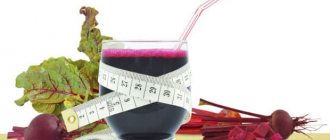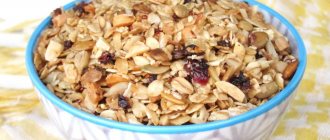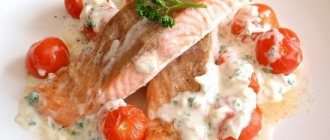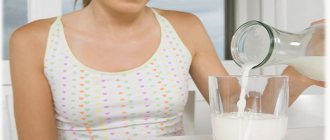Couscous is a cereal that contains a huge list of substances beneficial to the body. It goes well with all foods and is good for both children and adults. Couscous helps with central nervous system disorders, sleep disorders, severe fatigue and stress. It strengthens the heart muscle and enriches the blood with hemoglobin. But in addition to beneficial properties, cereals also have harmful ones, and therefore have contraindications that should be taken into account by patients with diabetes.
- Nutritional value and calorie content
- Couscous with pork in a slow cooker
Compound
The value of couscous lies in its composition. First of all, cereals are rich in B vitamins. They are responsible for immunity and complete regeneration of all cells. Cereals also contain selenium, copper, potassium and phosphorus. These microelements each have their own effect on the body. But always and definitely positive.
A little history
Couscous was produced in North African countries as early as the 13th century, where it is still a staple food. It was originally made mainly from millet, and sometimes from corn, barley, rice or wheat. This is the main difference between that ancient product and the current one, which is made from semolina.
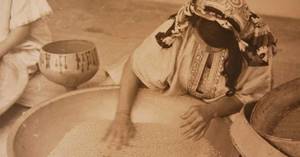
The production process was labor-intensive and long. The crushed grain groats were moistened, sprinkled with flour and shaken through a sieve until dense granules were formed. Then they were dried in the sun for two months and sent to storage containers. Currently, cereals are produced on an industrial scale on fully automated lines.
Benefits of couscous for the body
By regularly consuming such cereals, you receive invaluable benefits for the body. Because couscous works like this:
- Participates in the process of hematopoiesis. Ensures normal functioning of the circulatory system.
- Works as a powerful antioxidant. Prevents the negative effects of free radicals.
- Ensures healthy heart function and maintains normal bone tissue.
- Contains a large amount of complex carbohydrates. Therefore, it helps break down fats and gives you energy for the whole day.
- Eliminates symptoms of chronic fatigue. Fights insomnia and depression.

- Improves the appearance of hair, skin and nails. Namely, it rejuvenates and prevents the appearance of gray hair.
- Normalizes the functioning of the gastrointestinal tract.
- Stabilize water-salt metabolism in the body.
- Stimulates brain function.
- Increases the concentration of hemoglobin in the blood.
- Reduces bad cholesterol levels.
- Promotes the full production of female sex hormones.
- Keeps joints healthy.
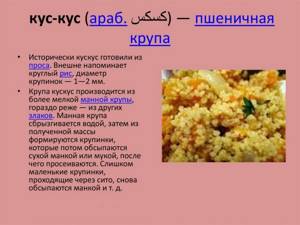
Interesting: Brown rice for weight loss
Couscous with tomatoes
We suggest you prepare a spicy spicy dish, namely couscous with tomatoes:
- 1 piece each hot pepper and onion
- clove of garlic
- 5 pcs cherry tomatoes
- ¾ cup couscous
- Spices to taste
Couscous with tomatoes
To get a delicious dish:
- Prepare a spicy seasoning - add pepper and garlic to hot oil. You will hear a characteristic smell, which means it’s time to remove the sting from the oil.
- Couscous must be boiled in salted water according to instructions.
- Cut the tomatoes and onions into half rings and fry them a little in a frying pan. When the vegetables are ready, add the couscous and heat the mixture.
- Place the cereal and vegetables on plates, drizzle with hot oil and garnish with herbs. The spicy dish is ready, you will like it.
Harm of couscous
Despite the fact that cereals are most beneficial for the body and have an average glycemic index, you should still avoid them in the following cases:
Diabetes. It is worth considering that cereal increases glucose levels.
People with individual intolerance to wheat, grains and gluten.
Obesity. It is important to remember that the group has a high caloric content. And in combination with other harmful products such as fast food, sweets, it can lead to significant weight gain.
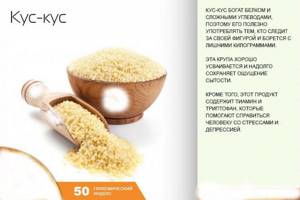
Recipe for Couscous with 1.5% milk. Calorie, chemical composition and nutritional value.
Nutritional value and chemical composition of “Couscous with milk 1.5%”.
The table shows the nutritional content (calories, proteins, fats, carbohydrates, vitamins and minerals) per 100 grams of edible portion.
| Nutrient | Quantity | Norm** | % of the norm in 100 g | % of the norm in 100 kcal | 100% normal |
| Calorie content | 107.1 kcal | 1684 kcal | 6.4% | 6% | 1572 g |
| Squirrels | 5 g | 76 g | 6.6% | 6.2% | 1520 g |
| Fats | 1.5 g | 56 g | 2.7% | 2.5% | 3733 g |
| Carbohydrates | 17.1 g | 219 g | 7.8% | 7.3% | 1281 g |
| Organic acids | 0.1 g | ~ | |||
| Alimentary fiber | 0.9 g | 20 g | 4.5% | 4.2% | 2222 g |
| Water | 75 g | 2273 g | 3.3% | 3.1% | 3031 g |
| Ash | 0.728 g | ~ | |||
| Vitamins | |||||
| Vitamin A, RE | 8.3 mcg | 900 mcg | 0.9% | 0.8% | 10843 g |
| Retinol | 0.009 mg | ~ | |||
| Vitamin B1, thiamine | 0.064 mg | 1.5 mg | 4.3% | 4% | 2344 g |
| Vitamin B2, riboflavin | 0.145 mg | 1.8 mg | 8.1% | 7.6% | 1241 g |
| Vitamin B4, choline | 21.27 mg | 500 mg | 4.3% | 4% | 2351 g |
| Vitamin B5, pantothenic | 0.552 mg | 5 mg | 11% | 10.3% | 906 g |
| Vitamin B6, pyridoxine | 0.063 mg | 2 mg | 3.2% | 3% | 3175 g |
| Vitamin B9, folates | 7.678 mcg | 400 mcg | 1.9% | 1.8% | 5210 g |
| Vitamin B12, cobalamin | 0.36 mcg | 3 mcg | 12% | 11.2% | 833 g |
| Vitamin C, ascorbic acid | 0.9 mg | 90 mg | 1% | 0.9% | 10000 g |
| Vitamin D, calciferol | 0.027 mcg | 10 mcg | 0.3% | 0.3% | 37037 g |
| Vitamin H, biotin | 2.884 mcg | 50 mcg | 5.8% | 5.4% | 1734 g |
| Vitamin K, phylloquinone | 0.2 mcg | 120 mcg | 0.2% | 0.2% | 60000 g |
| Vitamin RR, NE | 1.3166 mg | 20 mg | 6.6% | 6.2% | 1519 g |
| Niacin | 0.092 mg | ~ | |||
| Macronutrients | |||||
| Potassium, K | 163.64 mg | 2500 mg | 6.5% | 6.1% | 1528 g |
| Calcium, Ca | 105.77 mg | 1000 mg | 10.6% | 9.9% | 945 g |
| Magnesium, Mg | 19.37 mg | 400 mg | 4.8% | 4.5% | 2065 g |
| Sodium, Na | 47.75 mg | 1300 mg | 3.7% | 3.5% | 2723 g |
| Sera, S | 49.62 mg | 1000 mg | 5% | 4.7% | 2015 |
| Phosphorus, P | 108.7 mg | 800 mg | 13.6% | 12.7% | 736 g |
| Chlorine, Cl | 101.15 mg | 2300 mg | 4.4% | 4.1% | 2274 g |
| Microelements | |||||
| Aluminium, Al | 44.1 mcg | ~ | |||
| Iron, Fe | 0.276 mg | 18 mg | 1.5% | 1.4% | 6522 g |
| Yod, I | 6.21 mcg | 150 mcg | 4.1% | 3.8% | 2415 g |
| Cobalt, Co | 0.677 mcg | 10 mcg | 6.8% | 6.3% | 1477 g |
| Manganese, Mn | 0.1434 mg | 2 mg | 7.2% | 6.7% | 1395 g |
| Copper, Cu | 54.14 mcg | 1000 mcg | 5.4% | 5% | 1847 |
| Molybdenum, Mo | 4.414 mcg | 70 mcg | 6.3% | 5.9% | 1586 g |
| Tin, Sn | 11.48 mcg | ~ | |||
| Selenium, Se | 1.655 mcg | 55 mcg | 3% | 2.8% | 3323 g |
| Strontium, Sr | 15.01 mcg | ~ | |||
| Fluorine, F | 17.66 mcg | 4000 mcg | 0.4% | 0.4% | 22650 g |
| Chromium, Cr | 1.77 mcg | 50 mcg | 3.5% | 3.3% | 2825 g |
| Zinc, Zn | 0.4941 mg | 12 mg | 4.1% | 3.8% | 2429 g |
| Digestible carbohydrates | |||||
| Mono- and disaccharides (sugars) | 4.3 g | max 100 g | |||
| Essential amino acids | |||||
| Arginine* | 0.083 g | ~ | |||
| Valin | 0.096 g | ~ | |||
| Histidine* | 0.046 g | ~ | |||
| Isoleucine | 0.087 g | ~ | |||
| Leucine | 0.154 g | ~ | |||
| Lysine | 0.043 g | ~ | |||
| Methionine | 0.035 g | ~ | |||
| Threonine | 0.06 g | ~ | |||
| Tryptophan | 0.029 g | ~ | |||
| Phenylalanine | 0.11 g | ~ | |||
| Nonessential amino acids | |||||
| Alanin | 0.066 g | ~ | |||
| Aspartic acid | 0.092 g | ~ | |||
| Glycine | 0.071 g | ~ | |||
| Glutamic acid | 0.814 g | ~ | |||
| Proline | 0.249 g | ~ | |||
| Serin | 0.106 g | ~ | |||
| Tyrosine | 0.059 g | ~ | |||
| Cysteine | 0.064 g | ~ | |||
| Sterols (sterols) | |||||
| Cholesterol | 4.51 mg | max 300 mg | |||
| Saturated fatty acids | |||||
| Saturated fatty acids | 0.9 g | max 18.7 g | |||
| 16:0 Palmitinaya | 0.019 g | ~ | |||
| 18:0 Stearic | 0.001 g | ~ | |||
| Monounsaturated fatty acids | 0.427 g | min 16.8 g | 2.5% | 2.3% | |
| 18:1 Oleic (omega-9) | 0.015 g | ~ | |||
| Polyunsaturated fatty acids | 0.126 g | from 11.2 to 20.6 g | 1.1% | 1% | |
| 18:2 Linolevaya | 0.042 g | ~ | |||
| 18:3 Linolenic | 0.002 g | ~ | |||
| Omega-6 fatty acids | 0.1 g | from 4.7 to 16.8 g | 2.1% | 2% |
The energy value of Couscous with 1.5% milk is 107.1 kcal.
Primary Source: Created in the application by the user. Read more.
** This table shows the average levels of vitamins and minerals for an adult. If you want to know the norms taking into account your gender, age and other factors, then use the “My Healthy Diet” application.
As it is
To gently lose weight, you should not go on a diet of just couscous. This will definitely not bring any benefit. Quite the contrary. But if you approach the use of cereals correctly, then they will play a good role in weight loss. Follow these rules:
- Always eat couscous only for breakfast. These are complex carbohydrates that stimulate the body to digest food for a long time. As a result, he gets rid of extra pounds.
- Cook cereal only by steaming or using water to reduce its calorie content. Do not add sugar to the porridge under any circumstances. And definitely don't cook with milk.
- The portion should be equal to your palm. Not more.
Remember that cereals are rich in plant fiber. That is, it stimulates softening of the stool. It attracts water to the intestines and normalizes the process of bowel movements. And this is important for gentle weight loss.

Interesting: Rice flour for weight loss
Cooking recipes
Most often, cereals are used to prepare side dishes, to which oriental vegetables and spices are added in large quantities.
Boiled couscous can also be part of a salad or dessert.
Couscous with pork in a slow cooker
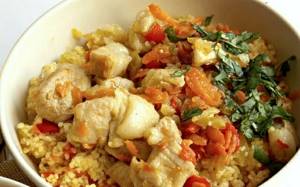
Ingredients:
- pork – 300 g;
- carrots - 1 pc.;
- onion – 50 g;
- water – 100 ml;
- vegetable oil – 15 ml;
- spices for meat – 1 tsp;
- salt – 1 tsp;
- couscous – 100 g.
Preparation:
- Chop the onion and add grated carrots, fry for 2-3 minutes.
- Cut the pork into small pieces, add salt and pepper.
- Add the meat to the roast and fry for 4-5 minutes.
- Add spices and water.
- Close and turn on the “Extinguishing” program for 50 minutes.
- After the signal, add couscous, stir and leave for 15 minutes in the “Warming” mode.
Before placing the finished dish on a plate, stir the contents with a spatula. Eat without bread.
Sweet couscous with allspice and sweet orange

To prepare the dish exactly according to the recipe you will need:
- couscous -120 g;
- pears – 3 pcs.;
- mint – 5 leaves;
- allspice large pepper 4-5 pcs.;
- white wine - half a glass;
- chopped almonds – 4 tbsp. l.;
- walnut oil – 1-2 tbsp. l.;
- freshly squeezed lime and sea buckthorn juice - 2 tbsp each. l.;
- high quality honey - 2 tbsp. l.
Preparation:
- Pour boiling water over the couscous and leave to swell.
- Add nut butter.
- Cut the pears into thin layers and simmer with the addition of honey, sea buckthorn and lime juice, allspice, white wine for 5 minutes.
- Add peeled orange slices and continue to simmer for 3-4 minutes.
- Fry almonds in a dry frying pan, add mint leaves and stewed fruit.
- Place in a sieve for 5-6 minutes.
- Place the dish on portioned plates, adding fruit, garnish with mint leaves and almond slices.
You can also make pilaf from couscous by adding barberries and cumin, mushrooms or chicken. Using this cereal, you can make your diet varied.
Why is cereal especially useful?
Couscous has the most beneficial effect on aging skin. If you begin to introduce such grains into your diet regularly, you will notice changes in the condition of your skin within a month. Wrinkles will be smoothed out, and its color will become fresh and beautiful. The elasticity of the epidermis will increase.
In addition, couscous actively removes flesh from the body. This is especially important for smokers and women who smoke. For men, cereal increases potency. Helps build muscle mass during active exercise in the gym.
Choose the right one
Many people want to extract the maximum number of beneficial properties from couscous. But this requires some knowledge about the product itself. It is especially difficult to choose the truly correct variety. Let's consider the basic selection rules:
- it is necessary to evaluate the external presentation of the product. Granular is especially relevant;
- when choosing, you should give preference to a product made from durum wheat, barley or high quality rice;
- The shelf life of the product plays an important role. The product packaging must indicate the date of manufacture;
- It is necessary to pay attention to the composition of the product. This product contains only water and cereal. Otherwise it cannot be considered useful;
- if the product is of good quality, then the manufacturer indicates general information about the product on its packaging;
- the product must be packaged in cardboard or paper;
- The packaging should be carefully inspected. There should be no damage to the product, even minor ones, because the grain itself is very small. The product must be hermetically packaged, otherwise all the taste and aroma characteristics of the couscous will be lost;
- It is best to choose Arabic products. Due to its quality, it is popular among consumers.
After purchasing the product, you need to pour it into a glass container. In such a container, the couscous will definitely not spoil. The main thing is not to place it next to aromatic products. In such conditions, cereals can be stored for a whole year.
